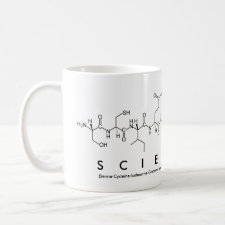
Authors: Xu SJ, Zou YW, Zhang HQ
Article Title: Well-defined hydrophilic "turn-on"-type ratiometric fluorescent molecularly imprinted polymer microspheres for direct and highly selective herbicide optosensing in the undiluted pure milks.
Publication date: 2020
Journal: Talanta
Volume: 211
Article Number: 120711.
DOI: 10.1016/j.talanta.2020.120711
Alternative URL: https://www.sciencedirect.com/science/article/pii/S0039914020300023
Abstract: Molecularly imprinted polymer (MIP)-based optosensing materials capable of direct, reliable, and highly selective detection of small organic analytes in complex aqueous samples hold great promise in many bioanalytical applications, but their development remains a challenging task. Addressing this issue, well-defined hydrophilic "turn-on"-type ratiometric fluorescent MIP microspheres are developed via a versatile and modular strategy based on the controlled/"living" radical polymerization method. Its general principle was demonstrated by the synthesis of red CdTe quantum dot (QD)-labeled silica particles with surface-bound atom transfer radical polymerization (ATRP)-initiating groups via the one-pot sol-gel reaction and their successive grafting of a thin fluorescent 2,4-D (an organic herbicide)-MIP layer (labeled with green organic fluorophores bearing both nitrobenzoxadiazole (NBD) and urea interacting groups) and hydrophilic poly(glyceryl monomethacrylate) (PGMMA) brushes via surface-initiated ATRP. The introduction of PGMMA brushes and rationally selected dual fluorescence labeling (i.e., red CdTe QDs being inert to 2,4-D and green NBD showing fluorescence "light-up" upon binding 2,4-D) onto MIP particles afforded them excellent complex aqueous sample-compatibility (due to their largely enhanced hydrophilicity) and analyte binding-induced "turn-on"-type ratiometric fluorescence changes, respectively. Such advanced MIP particles proved to be promising optosensing materials, which had a detection limit of 0.13 μM and showed obvious fluorescent color change upon binding different concentrations of 2,4-D in the undiluted pure milk. Moreover, they were successfully applied for direct and highly selective quantification of 2,4-D in the undiluted pure goat and bovine milks with good recoveries (97.9%-104.5%), even in the presence of several analogues of 2,4-D
Template and target information: 2,4-D, 2,4-dichlorophenoxyacetic acid
Author keywords: Molecularly imprinted polymers, Herbicide optosensing, Ratiometric, Fluorescence enhancement, Complex aqueous samples, Atom transfer radical polymerization
![]()


Join the Society for Molecular Imprinting

New items RSS feed
Sign-up for e-mail updates:
Choose between receiving an occasional newsletter or more frequent e-mail alerts.
Click here to go to the sign-up page.
Is your name elemental or peptidic? Enter your name and find out by clicking either of the buttons below!
Other products you may like:
 MIPdatabase
MIPdatabase









